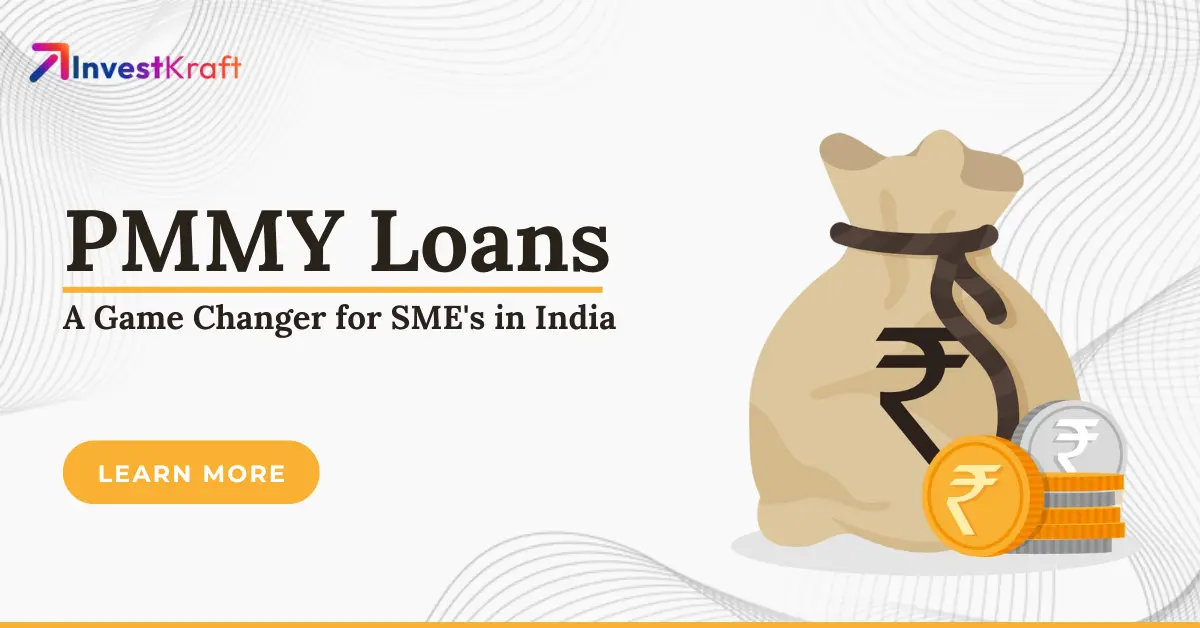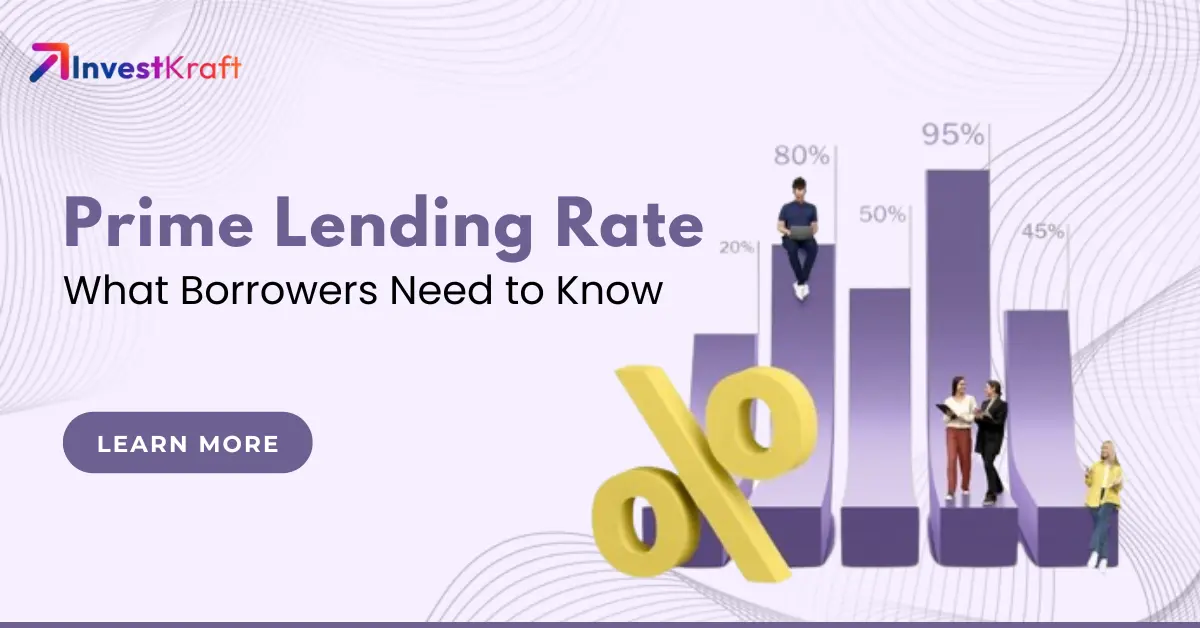How Digital Lending Platforms are transforming the Personal Loan Landscape

The way we borrow money has completely changed over the years, and digital lending platforms are leading this transformation. Gone are the days when people had to visit banks, wait in long queues, or deal with piles of paperwork to get a loan. Today, everything is shifting online, making it faster, easier, and more convenient for borrowers.
The rise in online lending can be attributed to various factors such as the shutdown of traditional lending institutions and the growing demand for credit access prompted by the economic downturn resulting from the pandemic.
The COVID-19 pandemic played a huge role in speeding up this change. With traditional banks and financial institutions temporarily shutting down and more people needing credit during tough times, the demand for online loans shot up. It became clear that the old way of doing things just wasn’t enough to meet the needs of modern borrowers.
What are Digital Lending Platforms?
Digital lending platforms, also known as online lending platforms, are systems that facilitate the connection between borrowers and lenders during the lending process. They provide individuals and businesses with the opportunity to borrow funds from potential lenders through a user-friendly online interface.
How Digital Lending Platforms Work?
Digital lending platforms work differently for borrowers and lenders. The following table will clear all your doubts regarding how these online lending platforms work.
| For Borrowers | For Lenders |
| Digital lending has revolutionised the loan application process for borrowers - individuals and businesses alike | For lenders and debt investors, digital lending platforms provide a wide range of investment opportunities, allowing for customised portfolios based on individual preferences and risk tolerance |
| Applying for a loan is as simple as a few clicks from the comfort of your home | Once a profile is established, lenders can assess available loans and conduct thorough research before committing to investments |
| Online applications allow borrowers to submit their financial information digitally, negating the need for tiresome trips to physical branches | Secure money transfers and interest payments are seamlessly facilitated through the platform, while risk management tools help mitigate potential lending risks |
| The speed at which computers can accurately assess borrowers' repayment capacity expedites the approval process, saving precious time | |
| Once approval is granted, funds are swiftly disbursed, ensuring borrowers receive the financial assistance they need precisely when they need it | |
| When it comes to repayment, there is no need to worry about complicated procedures either – it's as effortless as a few clicks online |
Ultimately, digital lending enhances and simplifies the borrowing and investment processes, resulting in mutual benefits for all involved parties.
How is Digital Lending Different from Traditional Lending?
Digital lending has surged in popularity due to a combination of technological advancements, operational efficiency and user–friendly accessibility. Despite traditional banks remaining integral to India’s financial sector, businesses can greatly benefit from embracing digital lending options.
Let us find out the key differences between digital lending and traditional lending from the table below.
| Particular | Digital Lending | Traditional Lending |
| Application Process | Digital lending eliminates the need for time-consuming visits to physical branches and waiting in long queues. The entire application process can be completed online, allowing you to save valuable time and the borrower has time to work in a hurry. | Obtaining business loans from banks often involves in-person visits, lengthy application forms, and submission of supporting documents. Some banks offer online application forms, but multiple in-person visits are still required. |
| Documentation | Digital lending reduces paperwork by requiring scanned copies of key documents like address and identity proofs. | Business loans from banks involve tedious, time-consuming paperwork with forms, attestations, photocopies, and references, causing unnecessary hassle. |
| Loan Request Processing & Disbursal Time | Digital lenders process loan applications quickly, providing funds to bank accounts within a few working days, which is ideal for small business owners and start-ups needing urgent funding. | Traditional lending takes a long time to process and disburse loans, with banks sometimes taking weeks or even months for the whole process. |
| Determining Loan Eligibility | Digital lenders consider income, credit scores, social media, education, professional background, and future earnings for creditworthiness. | Loan eligibility in banks depends on factors such as employment history, income, assets, housing, and credit score. |
| Loan Amount Flexibility | Digital lenders offer flexible credit lines from Rs. 25,000 to Rs. 10 lakhs, considered small-ticket loans. Repayment can be done through affordable EMIs over 2 to 36 months. | Banks typically view loans below Rs. 1 lakh as high-risk due to the smaller amount involved, which may not justify the administrative and operational costs associated with the loan. Therefore, they may be hesitant to offer such loans or may attach stricter conditions and higher interest rates to compensate for the perceived risk. |
| Lender | With digital lending, you can compare lenders and choose the best loan from home. | With the conventional lending method, you are often required to visit multiple banks numerous times to gather all the necessary information. |
| Technology | Digital lending technology optimises customer interactions with seamless, intuitive, and functional interfaces. | Traditional lending is difficult because of outdated systems and technology. Banks struggle with old infrastructure, making it hard to provide products and services efficiently. UI, user flows, and customer tech support issues also affect the effectiveness of banking operations. |
| Customer Experience | Digital lending provides easy-to-use services, customised loan options, and round-the-clock customer assistance for a hassle-free experience. | Traditional lending involves in-person interactions with bank representatives, which can vary in quality and personalization. |
Challenges and Risks Associated with Digital Lending Platforms
Digital lending has transformed the borrowing process, offering borrowers increased ease, speed and convenience. Yet, it is essential to acknowledge the challenges and risks intertwined with its technological advancement. Potential risks encompass fraudulent activities, concerns over data privacy and the necessity for regulatory supervision.
- Digital lending carries a high risk of fraud due to impersonation, data manipulation, and fake loan applications. Lenders can reduce this risk by implementing strong fraud detection and prevention methods including identity verification, credit checks, and anti-money laundering checks.
- Data privacy concerns in digital lending include the collection and processing of personal and financial data, raising concerns about data privacy and security. Lenders must comply with data protection laws, such as GDPR and CCPA, and implement data security measures.
- Regulatory oversight is crucial for digital lending to ensure fairness, transparency, and protection for borrowers. It varies by country and includes consumer protection, anti-money laundering, and data privacy. Lenders must comply with applicable laws and stay informed about regulatory developments.
- Digital lending lacks a personal touch, making borrowers feel disconnected and unsupported. Lenders should invest in customer service, like chatbots and phone support, to address this issue.
- Digital lenders offer fewer loan options than traditional lenders, which can make it difficult for borrowers to find a loan that suits their needs. However, some digital lenders are expanding their offerings to include more loan products like personal loans, mortgages, and business loans.
- To reduce the risk of borrowers not repaying their loans, NBFCs in digital lending must assess repayment ability and credit history using smart data analysis. This will enable them to make better lending decisions and reduce default rates.
- Digital lending relies heavily on technology and online platforms. Technical issues, cyber-attacks, and system breakdowns can disrupt operations, leading to delays, mistakes, and data loss. NBFCs must invest in robust IT systems, cyber security, and contingency plans. Training employees in tech and cyber security is crucial to prevent data breaches.
5 Impact of Digital Lending Platforms on the Personal Loan Landscape
The rise of digital lending platforms has revolutionised the Indian personal loan market, challenging the dominance of traditional banks with their time-consuming processes and excessive paperwork. This shift towards digitization has transformed the way loans are processed, greatly improving the borrower experience and making funds more accessible than ever.
1. Impact on Customer Experience
Digital lenders have revolutionised the customer experience by providing efficient and user-friendly platforms. Borrowers can conveniently compare loan options, calculate EMIs and receive personalised offers with just a few clicks. This empowerment equips customers with information and choices, leading to a more transparent and customer-centric home loan process. Consequently, customers benefit from quicker loan approvals and lower interest rates, enabling them to make well-informed decisions and secure the best available deals.
2. Bridging the Urban-Rural Divide
The emergence of digital loans in India has been pivotal in connecting rural and urban areas to access home loans without having to undertake lengthy journeys to urban hubs. This advancement not only conserves time and resources but also extends the possibility of homeownership to a broader segment of the population.
3. Minimal Paperwork
Digital lending in India has simplified the traditional personal loan by reducing paperwork. Online verification and documentation streamline the process and speed up loan approval. Advanced algorithms and data analytics assess borrower eligibility, ensuring security and compliance.
4. Accessibility and Inclusivity
Digital loans in India have broadened access to personal financing, benefiting those in remote areas and young professionals. They provide quick approvals and disbursements, reducing the waiting period for loans, facilitating faster decision-making in the real estate market.
5. Transparency and Education
Digital lending platforms prioritise transparency with borrowers, offering clear loan terms, rates and repayment schedules upfront. This builds trust, avoids hidden fees and provides resources for informed borrowing and personal finance decisions, empowering borrowers.
Which Factors Should You Consider Before Choosing a Digital Lending Platform This Year?
Before opting for a digital loan, borrowers should be aware of certain factors. The increasing popularity of digital credit makes it important to understand key aspects. Being well-informed helps borrowers make better choices. Hence, it is crucial to be knowledgeable about digital loans before availing them.
Checking the credibility of a platform is essential before applying for a loan online. Conduct thorough research on the available platforms and verify their credibility.
Before taking any loan, it is important to understand the different types of loans available and which one best suits your needs. Think about whether you need a short-term or a long-term loan, what collateral you can provide, the available payment options and how long it will take to receive the loan. Experts advise having clear answers to these questions before committing to a loan.
While interest rates are indeed an important factor, experts advise that they should not be the sole consideration when applying for a loan. Nevertheless, it is crucial for borrowers to thoroughly evaluate the interest rates before proceeding with their loan application.
When finalising a scheme, it is crucial to carefully review all the clauses and conditions in the agreement. A reliable digital lending platform should provide clear communication about loan details with the assistance of a dedicated loan executive. Despite this, borrowers should ensure they have a complete understanding of the chosen scheme as well.
When using branchless online lending platforms, borrowers have various flexible repayment options to choose from. However, it is crucial to ensure that payments are only made to the official accounts registered under the NBFC/Bank/Partner platform’s name, rather than to individual loan executives. Most banks consider online payments to be secure as they can be traced and tracked.
The Future Trends in Digital Lending
Understanding the future trends in digital lending is crucial for businesses to stay ahead. Anticipating emerging trends that will shape the industry in the next decade or so is essential for strategic planning. As we move forward, it is important to keep an eye on technological advancements and changing consumer behaviours to adapt and thrive in the evolving landscape of digital lending.
Artificial Intelligence Simulating Human Intelligence: Artificial Intelligence (AI) and Machine Learning (ML) improve digital money lending by eliminating manual tasks, checking credit scores and creating profiles automatically. They also establish customer relationships by using AI-powered chatbots and enhance the lending process by detecting fraud.
- Computing Using Remote Servers: Cloud computing optimises digital lending by automating processes, leveraging advanced technologies, and promoting transparency, integrity, scalability, and security in data storage.
- Analysis of Data: Data is crucial for digital lending, ensuring high-end loan products and user experience. Advanced technology enables data transformation and analysis for customised loan offerings, especially in India’s non-metro regions.
- API and RPA: People today want a faster and smoother loan borrowing process. Technology like RPA has made it easier by automating processes like application submission, verification and loan disbursal. Combining RPA (Robotic Process Automation) and API (Application Programming Interface) provides quick access to digital loans and allows lenders to access data from anywhere securely.
- Alternative Lending Methods (P2P and Co-Lending): Digital peer-to-peer lending, facilitated by online platforms, is projected to reach 1 trillion dollars by 2025, as reported by Statistica. It presents an opportunity to streamline and enhance financing options for both start-ups and established businesses, offering cost-effective and convenient alternatives.
Concluding Thought
For lenders, going digital has been a smart move. By cutting costs, they’ve been able to improve their profit margins while offering better services. The benefits are clear for borrowers: quicker approvals, fewer hurdles, and more opportunities to secure a loan. As the world becomes increasingly digital, these platforms are set to dominate the personal loan market. They’re not just making borrowing easier; they’re redefining the entire lending experience.
In a country like India, the underlying growth potential in the digital lending landscape is enormous due to rising per capita income and surging local economies. And, according to experts, this can only be tapped through the deployment of advanced programming technologies like AI. So, whether you want to start a new digital lending business or upgrade an existing program, look at these disruptive technologies that would make online lending seamless and secure for both borrowers and lenders.
Verify Phone Number
Related Post

Top Loan Schemes with Highest Subsidies in India 2024
Find the Indian loans with the highest subsidy easily with the help of Investkraft. This guide provi...
Read more...
Pradhan Mantri Mudra Yojana (PMMY) Loan: Eligibility, Application Form, Benefits
The Pradhan Mantri Mudra Yojana (PMMY) loan has been a game changer for small and micro-enterprises...
Read more...
How Does the RBI Regulate P2P Lending in India 2024?
P2P lending has grown significantly in India, becoming an important part of the financial ecosystem....
Read more...
Grace Period vs Moratorium Period: A Detailed Comparison for Better Financial Decisions
The terms “moratorium period” and “grace period” are often mistaken to have the same meaning. Howeve...
Read more...
List of Microfinance Companies in India 2025 – Small Loans & Financial Services
Microfinance in India has been rapidly expanding as a viable financial service due to the emergence...
Read more...
Understanding Syndication Loans: A Guide for Borrowers and Lenders
Loan syndication is a solution for borrowers seeking large loans that may be beyond a single lender’...
Read more...
How Does the Moratorium Period Act as a Life Raft for Borrowers?
Financial jargon, whether taking a loan or opening a bank account, can be confusing and tricky. Thes...
Read more...
New to Credit? Stop Worrying and Build Your Credit with These Essential Tips
Establishing and maintaining a healthy credit score can seem overwhelming, particularly for new borr...
Read more...
Prime Lending Rate: A Friend or Foe for Borrowers?
When purchasing items on credit, it is common to need a financial investment and many turn to loans...
Read more...
Instant Cash Loans: Everything You Need to Know
Have you ever been in a situation where you did not have enough money to make a purchase? Maybe you...
Read more...Reach out to our Experts if you have any Doubts
Like the best things in life, Consultations @InvestKraft are free
Drop a Mail or give us a Missed Call & Begin your Investment Journey here



